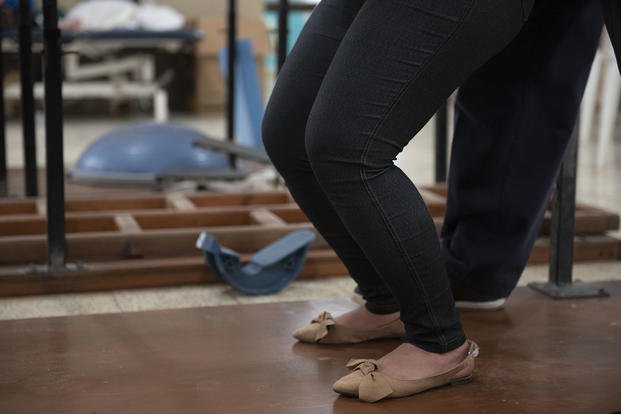This article on the knee is the third of three segments on the most injured body parts in military/athletic training. Check out the Stew Smith archives for previous articles that specifically discuss injury prevention and rehab of the lower back and shoulder.
Like the shoulder and the lower back, the knee joint is susceptible to injuries of the connecting tissues of ligaments and tendons, compression tissue of the cartilage, and muscular strength and flexibility imbalances.
The most common knee injury is patellofemoral pain syndrome (PFPS), commonly called "runner's knee," and Iliotibial Band (ITB) Syndrome. For most people, these are overuse injuries. In fact, the nickname for ITB at SEAL training is "I Tried BUD/S" because of so many students failing out of training with that injury.
PFPS can occur in avid runners as well as people who run for the first time in several months or even years without proper training. It is also important to rule out other knee problems when pain occurs and not assume every pain is "runner's knee." You could be suffering from a knee injury that requires surgery.
Usually, if your knee injury involves ligaments or cartilage, surgery is required and can be relatively quick with a speedy recovery, thanks to the latest in arthroscopic surgery techniques.
To help prevent runner's knee, ITB Syndrome and other injuries (not including sudden impact damage) there are a few rules that could help prevent them:
1. Do not run too much, too soon. Start a running program gradually, even if you were on the cross country team 10 years ago.
2. Replace old shoes every 300-400 miles or at least every six months and try not to use your running shoes as your everyday shoes. We walk differently than we run.
3. Stretch daily and become flexible, especially in the hamstrings, calves and lower back.
4. Strengthen thigh and hamstring muscles so you do not create imbalances in strength and flexibility.
5. Always rest, ice and only do non-impact aerobics, such as swimming, biking or rowing if your knees hurt when you run.
6. My rule: If it hurts to walk, don't run. If it hurts to run, just walk.
Visit Stephen M. Pribut's website for more information about injuries of the knee and other running-related issues.
Hamstring/lower-back stretch
From the standing or sitting position, bend over and touch your toes.
Thigh stretch standing
Pull your heel to your rear. If you cannot do this stretch as shown, just bend your knee in the same fashion; that will stretch your thigh muscles.
Calf stretch
Lean against a wall and push your heel to the floor, with most of your weight on your back leg.
Hip/outer thigh stretch -- ITB stretch
Sit and cross your legs. Pull your knee to your chest and hold for 10 seconds. Switch and repeat with the other leg.
You should do the stretches above and the minimum recommended stretches for at least 30 seconds each after a brisk, five-minute warmup jog. Always stretch after you have gotten the blood flowing to the muscles and connective tissues.
The exercises below also will help strengthen your knee joint through exercise of the connecting muscle groups.
Straight leg lifts
Strengthens the quadriceps. Lie on the floor. Lift one leg about 6-12 inches off the floor and hold for 10 seconds, flexing the thigh muscles. Lower and repeat 10 times. Switch legs, repeat five times and work up to 10 sets of 10 repetitions. You can do this anywhere, even while watching TV.
Half-squat
While standing, hold the pose and push yourself up and down within an eight- to 12-inch range of motion ... just like riding a horse. Do about five sets of 10-20 in a workout.
More Running and Cardio Articles
Stew Smith is a former Navy SEAL and fitness author certified as a Strength and Conditioning Specialist (CSCS) with the National Strength and Conditioning Association. Visit his Fitness eBook store if you're looking to start a workout program to create a healthy lifestyle. Send your fitness questions to stew@stewsmith.com.
Want to Learn More About Military Life?
Whether you're thinking of joining the military, looking for fitness and basic training tips, or keeping up with military life and benefits, Military.com has you covered. Subscribe to Military.com to have military news, updates and resources delivered directly to your inbox.




















